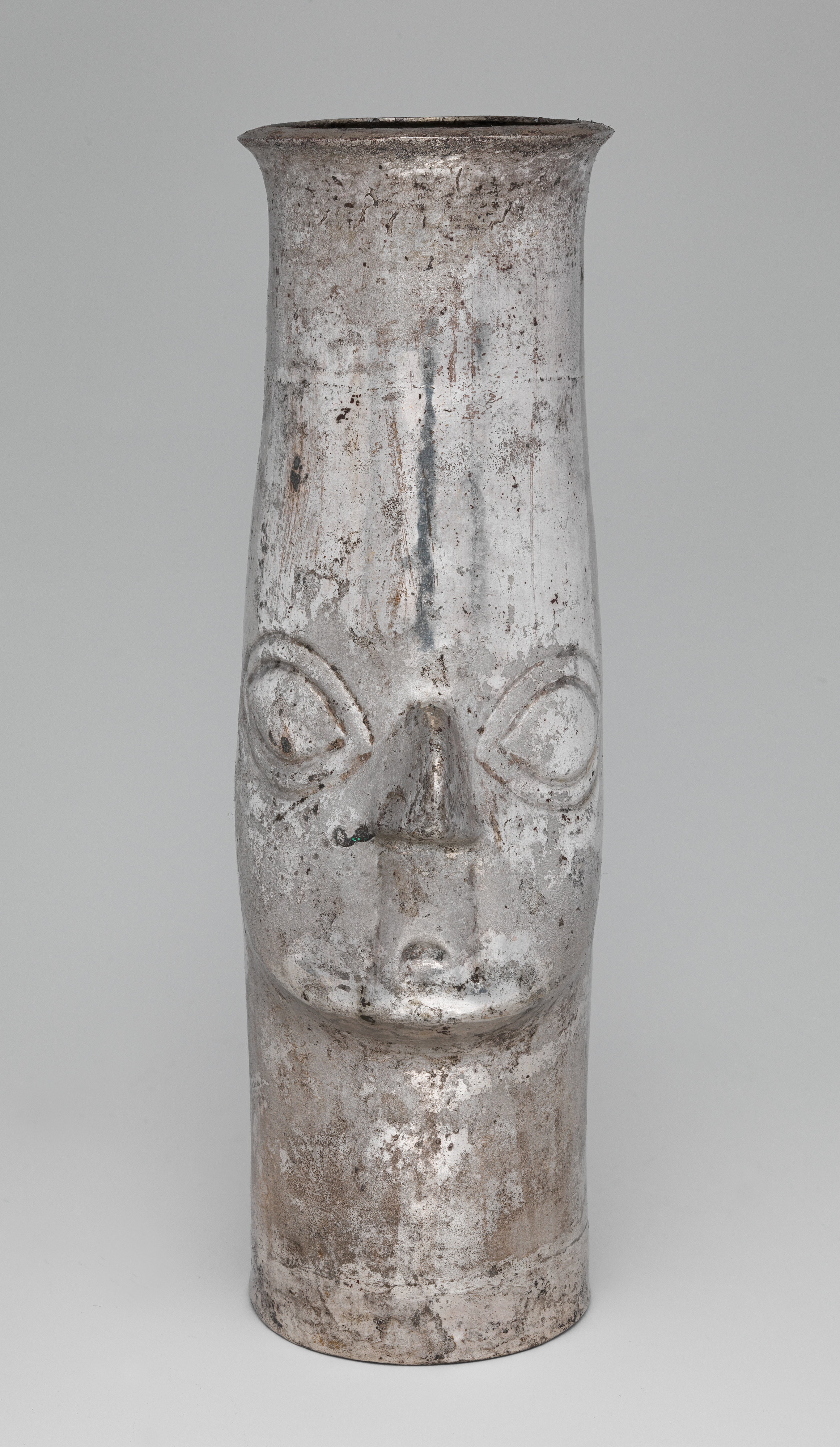Beaker with face
Not on view
Beakers with human faces on one side made of precious metals were worked in Peru from about the ninth to the early sixteenth century. Those with pronounced noses, resembling bird beaks, are said to have been found in many parts along the Central and South Coasts. Because none were excavated by archaeologists, their cultural attribution is uncertain. In the literature they are variously called Chimú, Chincha, Ica, and Inca. The more naturalistic rendering of the facial features on Chimú beakers, particularly the eyes and noses, would argue against their attribution to that culture.
The beakers were made in different sizes, from two to sixteen inches in height. Some are straight-sided, while others have flared bases and stepped tops. Many were made from a single sheet of silver by hammering the metal over carved wood molds that are flat in back and held in place by a wedge during hammering; others have soldered seams along the back and bottom. Although the faces on the beakers are quite standardized, the mouth usually downturned, there is great variety in the depiction of headdresses worked in repoussé. Many have stylized corncobs at the back of the head, in repoussé or attached by soldering, perhaps a reference to the use of such beakers for drinking chicha, a fermented corn beer, during rituals.
Due to rights restrictions, this image cannot be enlarged, viewed at full screen, or downloaded.
This artwork is meant to be viewed from right to left. Scroll left to view more.




